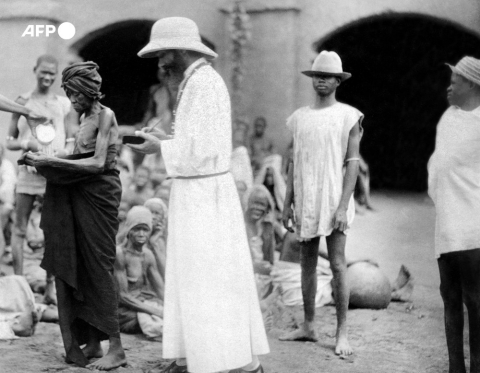'Scramble for Africa' decided in Berlin

Over several weeks from late 1884, European powers that were staking claims to territory in Africa met in Berlin to lay down the ground rules for their expanding colonisation.
In this story written 100 years later, AFP journalist Pierre Glachant looks back at the Berlin Conference on what became known as the Scramble for Africa.
PARIS, February 24, 1985 (AFP) - On February 26, 1885 a conference of 14 world powers racing to colonise Africa wrapped up after having laid the ground rules for the colonial carve-up of the continent.
For many historians disputes over borders in today's sub-Saharan Africa are peduced in the Berlin Conference.
Its final document, called the General Act, was the result of discussions that started in November 1884, presided by German Chancellor Otto von Bismarck.
Among the 14 nations represented in Berlin, Britain, France and Portugal had already set out on their colonial adventures. Others, like Belgium and Germany, were starting to show an interest in Africa.
The General Act laid out that any nation taking possession of any portion of the African coast would have to carry out "effective occupation", a provision intended to stop the setting up of colonies in name only.
It also said that nations would have to notify other signatories about their taking of territory.

These provisions would later also be applied to land in the continent's interior.
The Berlin Conference was convened at the request of Belgium's King Leopold II, who wanted his country's influence in the Congo recognised by the international community. The Congo was one of the conference's main topics.
By 1900, only 15 years later, all of Africa -- with the exception of Ethiopia, Liberia and Morocco -- had been shared out between the main European powers. The borders they decided, often arbitrarily, were set in stone.

- Problems inherited -
But there was later a shift towards keeping them intact. The 1963 charter of the Organisation of African Unity (OAU) provided for "non-interference in the internal affairs of States" and the "respect for the sovereignty and territorial integrity of each State".
In 1964 African heads of state adopted, almost unanimously, the principle of "the intangibility of borders". This principle has been regularly reaffirmed by the OAU and its successor, the African Union (AU).
The borders defined during the colonial era have caused several bloody conflicts in Africa. Somalia and Ethiopia, for example, fought wars in 1964 and 1977 over Ethiopia's ethnic Somali Ogaden region.
